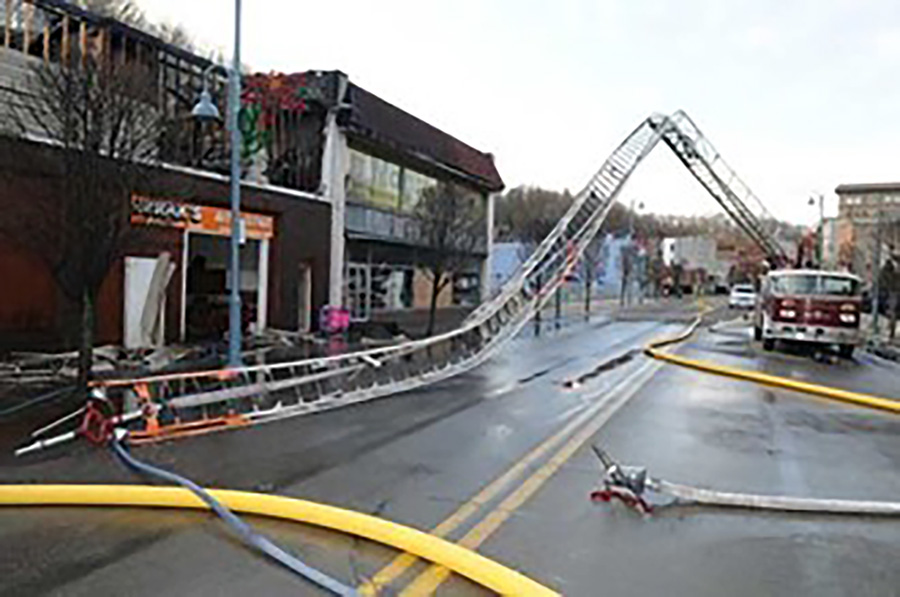Aerial Error: Firetruck Ladder Case Study

Case Summary: At the scene of a fire, a firefighter climbed a truck-mounted ladder to adjust the flow of water to better direct it onto the fire. He ascended the extended ladder, reached the top, and secured himself with a safety belt. Shortly after the flow of water resumed, the ladder began to twist and collapse. The ladder and the firefighter fell to the ground. The firefighter experienced non-life-threatening injuries.
Expert Analysis: Inspection of the ladder truck and review of the scene photographs revealed that at the time of the failure, the ladder was nearly fully extended at a relatively shallow angle. Review of the manufacturer’s load chart and the operator’s manual showed that, at this shallow angle and extended length, the ladder was only rated for un-manned operations when the nozzle was in use. At steeper angles, or a shorter extension, the truck and ladder did allow for manned operation with flowing water. This was not permitted, however, for the position at the time of the incident. The shallow angle and extended length resulted in increased forces on the ladder, along with the added weight of the water. These factors required the use of the ladder to be limited to unmanned operations.
In addition to the load chart, there were three indicators on the operator’s panel at the base of the ladder, which would identify the limits of how the ladder could be used given the specific angle and extended length. Following the incident, all three read “danger”; however, it is unknown what they showed at the time the firefighter began to ascend the ladder. Members of the fire company also reported frequent malfunctions of the indicators on this truck and their unreliability, leading these warnings to be often ignored.
Ultimately, the analysis revealed that while the ladder was being operated beyond the specified operating limits of the manufacturer, the loads, which would have been present, were only slightly greater than what would have existed at the manufacturer’s operating limits. The ladder should have been designed with an adequate factor of safety to allow for this operation without catastrophic failure.
Case Results: This case concluded when the injured firefighter made a successful recovery, negating the need to pursue further investigation into the cause of the design factors which contributed to the ladder collapse.

